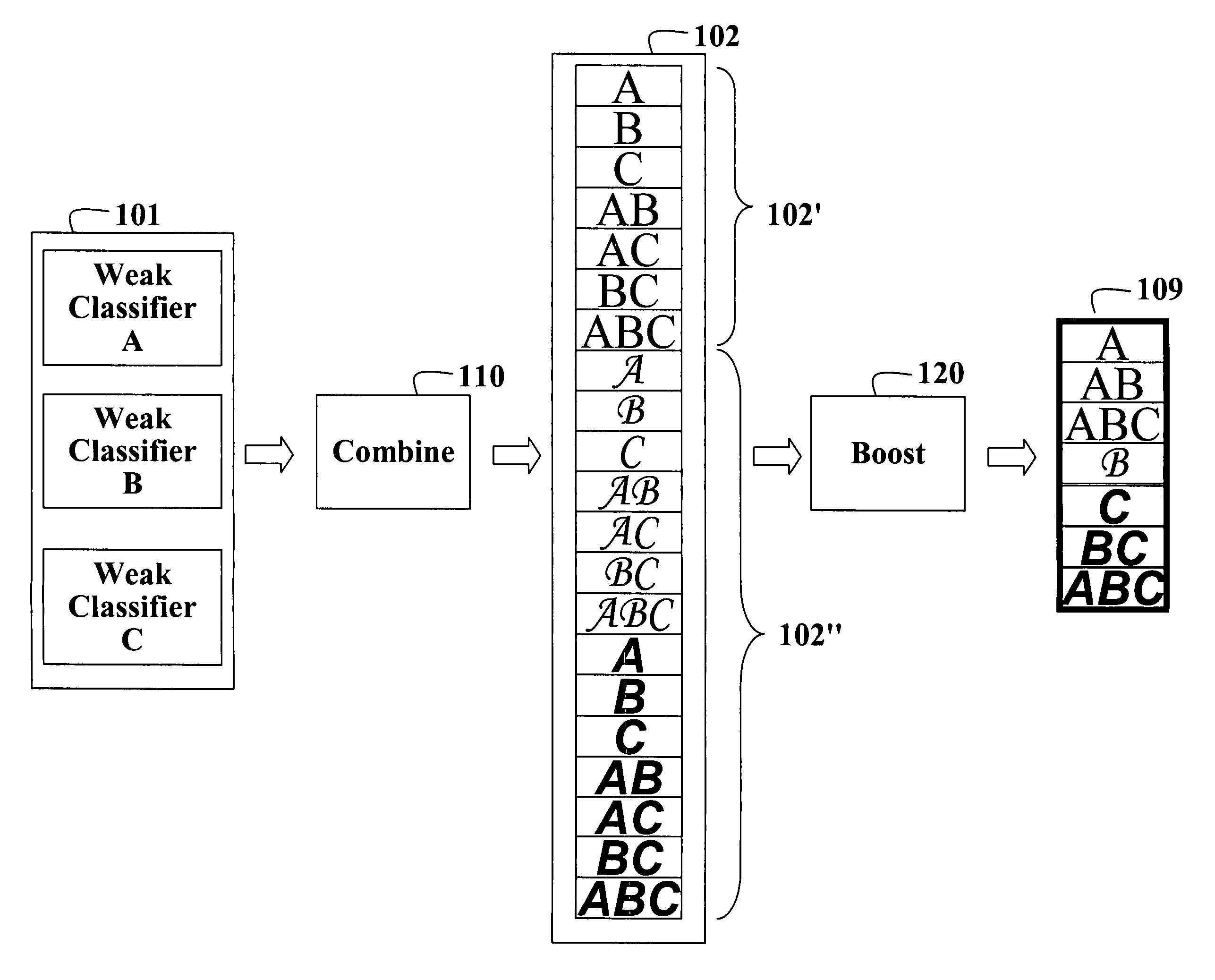Weighted ensemble boosting method for classifier combination and feature selection
a classifier and feature selection technology, applied in the field of strong classifiers, can solve the problems of large number of events and object classes, and achieve the effect of reducing error rates and achieving comparable stability
- Summary
- Abstract
- Description
- Claims
- Application Information
AI Technical Summary
Benefits of technology
Problems solved by technology
Method used
Image
Examples
Embodiment Construction
[0009]FIG. 1 shows a method for constructing a strong classifier 109 from weak classifiers (A, B, C) 101 according to an embodiment of the invention. The weak classifiers are combined 110 to produce a set of combined classifiers 102. Then, a boosting process 120 is applied to the set of combined classifiers to construct the strong classifier 109.
[0010]Weak Classifiers
[0011]The weak classifiers can include binary and multi-class classifiers. A binary classifier determines whether a single class is recognized or not. A multi-class classifier can recognize several classes.
[0012]An output of each weak classifier can be represented by posterior probabilities. Each probability indicates how certain a classifier is about a particular classification, e.g., the object identity. In addition, each weak classifier can be associated with a confidence matrix. The confidence matrix indicates how well the classifier performs for a particular class. The confidence matrices are obtained by training a...
PUM
 Login to View More
Login to View More Abstract
Description
Claims
Application Information
 Login to View More
Login to View More - R&D
- Intellectual Property
- Life Sciences
- Materials
- Tech Scout
- Unparalleled Data Quality
- Higher Quality Content
- 60% Fewer Hallucinations
Browse by: Latest US Patents, China's latest patents, Technical Efficacy Thesaurus, Application Domain, Technology Topic, Popular Technical Reports.
© 2025 PatSnap. All rights reserved.Legal|Privacy policy|Modern Slavery Act Transparency Statement|Sitemap|About US| Contact US: help@patsnap.com



